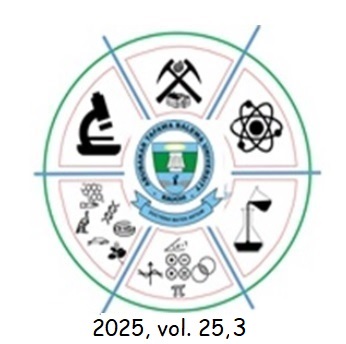THE CHEMISTRY OF MICRO-PLASTICS AND NANO-PLASTICS IN SOIL-WATER
Keywords:
Microplastics; Nanoplastics; Pathways; Reaction Kinetics; Radicals, Soil-WaterAbstract
Microplastics and nanoplastics are universally distributed and frequently present in soil-water systems, thus posing serious health and ecological risks worldwide. This study presented and summarised the impact of fluctuations in selected free radicals (hydrogen peroxide, superoxide radicals, hydroxyl and peroxyl radicals) in soil-water systems on the degradation of microplastics and nanoplastics. The study established how fluctuations in hydrogen peroxide, superoxide radicals, hydroxyl and peroxyl radicals controlled by climate change impacted the fate of nanoplastics and microplastics. The study revealed that there are two basic mechanisms through which these free radicals start the degradation of microplastics and nanoplastics, which are indirect and direct oxidations. Change in precipitation and rainfall pattern, drought, heat-waves and wind speed or storms, which are induced by climate change, always modify soil conditions. The variations in free radicals can exert a significant influence and impact on the degradation of microplastics and nanoplastics, thus having a significant in the ecological implications. It was concluded that further studies are required in the mechanisms underlying the degradation, migration, distribution, and ecotoxicity of microplastics and nanoplastics with their derivatives, driven by vigorously changed free radicals in response to climate change, to enable the formulation of more effective environmental protection techniques to address the significant challenges posed by microplastics and nanoplastics pollution under complex climate conditions.
Downloads
Downloads
Published
Issue
Section
License
Copyright (c) 2025 Journal of Pure and Applied Sciences (Science Forum)

This work is licensed under a Creative Commons Attribution-NonCommercial-ShareAlike 4.0 International License.




